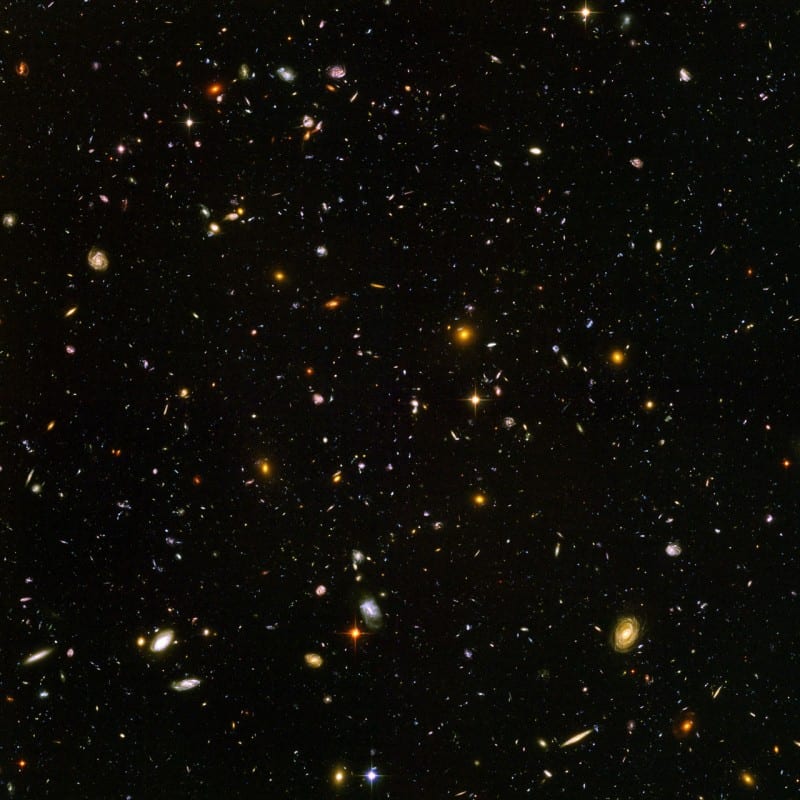The Cosmos with HUDF
The Hubble Ultra-Deep Field in Light and Sound
Galaxies, galaxies everywhere – as far as the NASA/ESA Hubble Space Telescope can see. This view of nearly 10,000 galaxies is the deepest visible-light image of the cosmos. Called the Hubble Ultra Deep Field, this galaxy-studded view represents a “deep” core sample of the universe, cutting across billions of light-years.
The snapshot includes galaxies of various ages, sizes, shapes, and colours. The smallest, reddest galaxies, about 100, may be among the most distant known, existing when the universe was just 800 million years old. The nearest galaxies – the larger, brighter, well-defined spirals and ellipticals – thrived about 1 billion years ago, when the cosmos was 13 billion years old.
In vibrant contrast to the rich harvest of classic spiral and elliptical galaxies, there is a zoo of oddball galaxies littering the field. Some look like toothpicks; others like links on a bracelet. A few appear to be interacting. These oddball galaxies chronicle a period when the universe was younger and more chaotic. Order and structure were just beginning to emerge.
The Ultra Deep Field observations, taken by the Advanced Camera for Surveys, represent a narrow, deep view of the cosmos. Peering into the Ultra Deep Field is like looking through a 2.5 metre-long soda straw.
In ground-based photographs, the patch of sky in which the galaxies reside (just one-tenth the diameter of the full Moon) is largely empty. Located in the constellation Fornax, the region is so empty that only a handful of stars within the Milky Way galaxy can be seen in the image.
In this image, blue and green correspond to colours that can be seen by the human eye, such as hot, young, blue stars and the glow of Sun-like stars in the disks of galaxies. Red represents near-infrared light, which is invisible to the human eye, such as the red glow of dust-enshrouded galaxies.
The image required 800 exposures taken over the course of 400 Hubble orbits around Earth. The total amount of exposure time was 11.3 days, taken between Sept. 24, 2003 and Jan. 16, 2004.